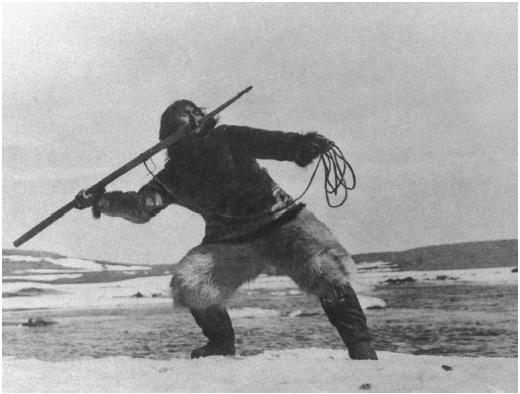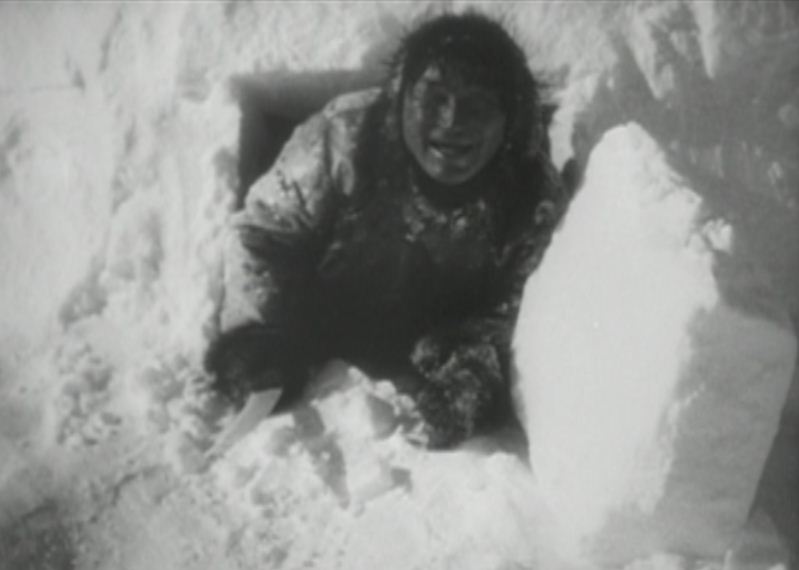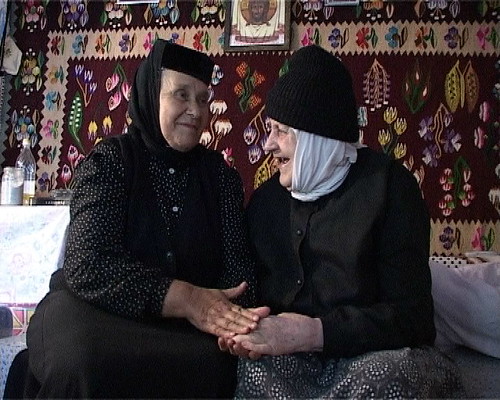The second week revolved completely around the differences between the very early anthropological films and the ethnographic films that were shot during the first half of the 20th century. Both readings that we had for this week and the videos and films we watched showed staggering changes in the attitudes towards ethnographic film making. Haddon, Rivers and their short films about the people in Torres Strait were just as static, theatrical and lacking in narrative as the first films of the Lumiére brothers. However, the films made by Flaherty showed a movement towards a narrative approach mixed with Malinowski's innocent eye and a huge amount of romanticism and idealism.
Film: Nanook of the North by Robert Flaherty
Flaherty's film is more about narrative than anything else. That is the best and worse trait of his film. Even though he is completely absent in his film and the viewer gets the feeling that the camera was just floating around Nanook and his family, I got the inkling during the screening that this is not really Nanook's story, but Flaherty's story about Nanook. A romanticised view of a world that did not exist anymore.
The whole film revolves around the theme of man vs nature and the brave fight for survival which we could observe through this mighty character, Nanook. That is the other novelty in Flaherty's take on ethnographic film making: character creation. He gives the audience someone to root for with a narrative that makes the whole story exciting. However, one wonders if this approach pushes reality and anthropological data into the background. In my opinion it does not do that necessarily, as Flaherty argued one must make a good story to dig out reality sometimes and I can subscribe to this point of view partially, albeit the feeling that this film is much more about Flaherty's take on Nanook's life than anything else bothered me sometimes.
The last topic that I have to touch on is Flaherty's essentialisation of culture. This is not only Flaherty's take on ethnography of the time, just like him many others presented one person or group as an essential representation of a certain culture. This can lead to over-generalisation, but it is not the worst of all evils probably. There are general traits in every culture and these can be shown through certain groups from a whole people, however one has to be cautious with such an approach because it can lead to the misrepresentation of culture.
2011. január 26., szerda
2011. január 25., kedd
Week #1
I was very interested to see what visual anthropology actually meant. I had big expectations of the course, to see what role photography and film play in anthropology. The first to readings were quite interesting. Mead's passionate argument for the use of modern techniques in preserving dying cultures was very good; my only problem was that it handled film and pictures as mere tools to collect and record data instead as date in their own right.
The second piece by Banks & Morphy moved along the same lines as Mead but they took it a big step further in arguing that photographs and films can actually work as date in themselves in anthropology. Their take on this subject is much closer to my thinking than Mead's; even though her passion for the use of modern techniques in anthropology is absolutely admirable.
Film: Into the Field by Alyssa Grossman
The first film we watched was about orthodox nuns in Romania and it was completely the opposite that I had had in mind about an ethnographic film. It was entertaining, well paced and very interesting. I found Grossman's way of incorporating herself into the film through little animations exciting but also tiring sometimes and hard to decipher. Some of the animations were easily decodable but some others felt a bit forced and by the end of the film a bit tiring.
However, the film gave a good picture about the life of the nuns and brought up several topics about the differences between the outside world and the inside world. The second topic which was very prevelant was the relationship between nuns and the very strict hierachy and lifestyle they followed. A narrative about these issues could be strongly felt all through the whole film even though Grossman's whole take on ethnographic film making felt very informal and therefore quite entertaining.
For me this movie with the intertitles and animations felt a bit like an artsy Tarantino film, without the blood and gores of course. And, even though the anthropologist never really showed up in the film except for the animations, her presence could be felt during the whole movie through the interactions of the nuns with the camera and their reactions to Grossman's presence. The intimacy between the anthropologist and the observed came through very well.
The second piece by Banks & Morphy moved along the same lines as Mead but they took it a big step further in arguing that photographs and films can actually work as date in themselves in anthropology. Their take on this subject is much closer to my thinking than Mead's; even though her passion for the use of modern techniques in anthropology is absolutely admirable.
Film: Into the Field by Alyssa Grossman
The first film we watched was about orthodox nuns in Romania and it was completely the opposite that I had had in mind about an ethnographic film. It was entertaining, well paced and very interesting. I found Grossman's way of incorporating herself into the film through little animations exciting but also tiring sometimes and hard to decipher. Some of the animations were easily decodable but some others felt a bit forced and by the end of the film a bit tiring.
However, the film gave a good picture about the life of the nuns and brought up several topics about the differences between the outside world and the inside world. The second topic which was very prevelant was the relationship between nuns and the very strict hierachy and lifestyle they followed. A narrative about these issues could be strongly felt all through the whole film even though Grossman's whole take on ethnographic film making felt very informal and therefore quite entertaining.
For me this movie with the intertitles and animations felt a bit like an artsy Tarantino film, without the blood and gores of course. And, even though the anthropologist never really showed up in the film except for the animations, her presence could be felt during the whole movie through the interactions of the nuns with the camera and their reactions to Grossman's presence. The intimacy between the anthropologist and the observed came through very well.
Feliratkozás:
Bejegyzések (Atom)



